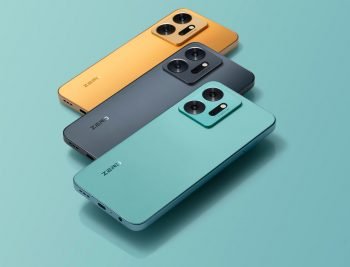
Meet the Infinix Zero 20 and Zero Ultra
Infinix has finally launched its two newest phones, the Infinix Zero Ultra, and the Infinix Zero 20. Now the two phones do come with some particular differences in terms of specs and design, with some pretty interesting features to boot. With that said, we’re going to go over some of the hardware features of the new handsets – let’s get started!
Build and Display
While both phones might seem a bit similar at first glance, there are some differences between the two handsets in terms of design. For one, the Infinix Zero 20 comes with a mostly plastic build, save for the metal camera module on the rear panel, which itself features a cool-looking gradient finish with a matte feel. The front of the Zero 20 comes with a 6.7-inch AMOLED display, complete with a 90Hz refresh rate and 1080 x 2400 pixel resolution. The right-hand side comes with a fingerprint scanner built into the power button.
On the other hand, the Infinix Zero Ultra does manage to live up to its name – it’s got a larger 6.8-inch AMOLED display (albeit with the same resolution) with curved edges, a hole-punch camera, and a 120Hz refresh rate, a more premium-feeling build that features a textured back panel with a groovy design and slimmer sides. There’s no fingerprint power button here, though – the display contains the biometrics needed to unlock the phone with fingerprints.
Another difference between the two phones is that the Zero 20 comes with a 3.5mm headphone jack, a “budget luxury” not found on its more premium sibling.
Internal Specs and Cameras
In terms of performance, the Zero Ultra obviously has the Zero 20 out-powered thanks to the MediaTek Dimensity 920 inside, paired with 8GB of RAM and 256 GB of internal storage, with support for microSD expansion. Meanwhile, the Zero 20 has to make do with the MediaTek Helio G99 chipset, 8GB of RAM, and a choice of either 128 or 256GB of internal storage.
Both phones come with 4,500 mAh batteries, but the zinger here is that the Infinix Zero Ultra comes with 180W fast-charging – no, that is not a typo, as Infinix says that the phone will be able to charge from 0 to 100 in under fifteen minutes. By comparison, the Zero 20 is limited to slower 45W fast-charging speeds.
As for cameras, the Infinix Zero 20 comes with a 108-megapixel main camera, a secondary 13-megapixel sensor, and an additional 2-megapixel sensor, with a whopping 60-megapixel front-facing camera. Its bigger sibling features a 200-megapixel main sensor, a 13-megapixel ultra-wide lens, and a third 2-megapixel sensor. The front of the phone houses a 60-megapixel selfie camera.
The 200-megapixel camera on the Ultra should be an interesting one in terms of performance, as it’s Samsung’s new ISOCELL HP1 sensor, which promises impressive imaging potential.
Final Thoughts
Now, Infinix does include a special promo of sorts with the Zero Ultra – each Zero Ultra purchase comes with a unique NFT lottery card, meaning each purchase gives buyers a chance to win an NFT. The NFT collection in particular pays tribute to space exploration and offers audiences a chance to experience a unique customization experience, which does add a unique approach to how Infinix is marketing the phone.
So far, the Infinix Zero 20 and Zero Ultra offer buyers a new choice when it comes to budget-friendly powerhouse phones, in contrast to the likes of Xiaomi, Oppo, and such. In particular, we think the Ultra is a great choice, given the competent chipset, fast-charging capabilities, and impressive display, to name a few.
Stay tuned as go more in-depth with these devices in the coming days.